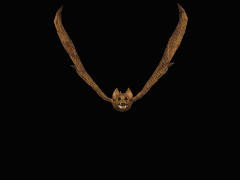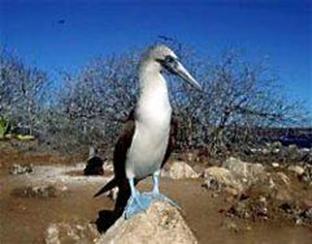


|
Pelecaniformes:
The Pelecaniformes are an order of medium-sized and large waterbirds found worldwide. They are distinguished from other birds by the possession of feet with all four toes webbed (totipalmate). Most have a bare throat patch (gular patch). There are some 50-60 living species, depending on which families are placed in this group. They feed on fish, squid or similar marine life. Nesting is colonial, although birds are monogamous, and the young are born helpless — in contrast, for example, to many waders.
Systematics and Evolution:
Sibley and Ahlquist's landmark DNA-DNA hybridisation studies (See: Sibley-Ahlquist taxonomy) led to them placing the families traditionally contained within the Pelecaniformes together with the grebes, cormorants, ibises and spoonbills, New World vultures, storks, penguins, albatrosses, petrels, and loons together as a sub-group within a greatly expanded order Ciconiiformes, a radical move which by now has been all but rejected: their "Ciconiiformes" merely assembled all early advanced land- and seabirds for which their research technique delivered insufficient phylogenetic resolution. Recent research strongly suggests that the similarities between the Pelecaniformes as traditionally defined are the result of convergent evolution rather than common descent, and that the group is paraphyletic (Mayr, 2003). All families in the traditional or revised Pelecaniformes except the Phalacrocoracidae have only a few handfuls of species at most, but many were more numerous in the early Neogene. Fossil genera and species are discussed in the respective family or genus accounts; two little-known prehistoric pelecaniforms, however, cannot be classified accurately enough to assign them to a family. They are "Sula" ronzoni from Early Oligocene rocks at Ronzon (France), which was initially believed to be a sea-duck and possibly is an ancestral pelecaniform, and a Pleistocene fossil from Australia apparently related to darters and described as Anhinga laticeps.
|
